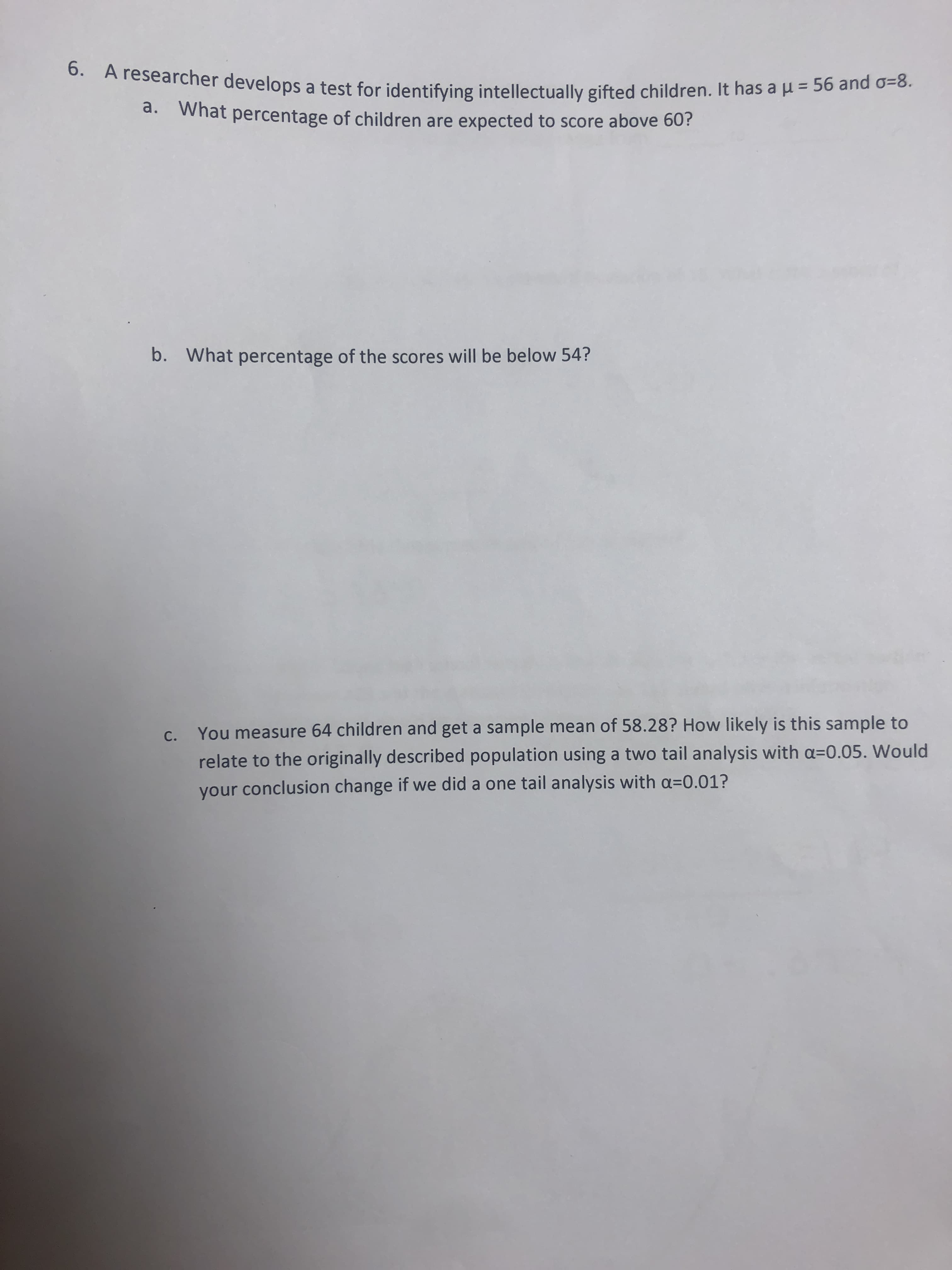6. A researcher develops a test for identifying intellectually gifted children. It has au= 56 and o=8. d. What percentage of children are expected to score above 60? What percentage of the scores will be below 54? b. You measure 64 children and get a sample mean of 58.28? How likely is this sample to C. relate to the originally described population using a two tail analysis with a 0.05. Would your conclusion change if we did a one tail analysis with a-0.01?
6. A researcher develops a test for identifying intellectually gifted children. It has au= 56 and o=8. d. What percentage of children are expected to score above 60? What percentage of the scores will be below 54? b. You measure 64 children and get a sample mean of 58.28? How likely is this sample to C. relate to the originally described population using a two tail analysis with a 0.05. Would your conclusion change if we did a one tail analysis with a-0.01?
Glencoe Algebra 1, Student Edition, 9780079039897, 0079039898, 2018
18th Edition
ISBN:9780079039897
Author:Carter
Publisher:Carter
Chapter4: Equations Of Linear Functions
Section: Chapter Questions
Problem 8SGR
Related questions
Question

Transcribed Image Text:6. A researcher develops a test for identifying intellectually gifted children. It has au= 56 and o=8.
d.
What percentage of children are expected to score above 60?
What percentage of the scores will be below 54?
b.
You measure 64 children and get a sample mean of 58.28? How likely is this sample to
C.
relate to the originally described population using a two tail analysis with a 0.05. Would
your conclusion change if we did a one tail analysis with a-0.01?
Expert Solution
This question has been solved!
Explore an expertly crafted, step-by-step solution for a thorough understanding of key concepts.
This is a popular solution!
Trending now
This is a popular solution!
Step by step
Solved in 7 steps with 5 images

Recommended textbooks for you

Glencoe Algebra 1, Student Edition, 9780079039897…
Algebra
ISBN:
9780079039897
Author:
Carter
Publisher:
McGraw Hill

Glencoe Algebra 1, Student Edition, 9780079039897…
Algebra
ISBN:
9780079039897
Author:
Carter
Publisher:
McGraw Hill